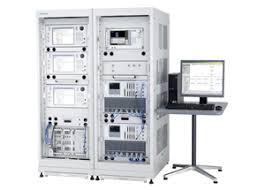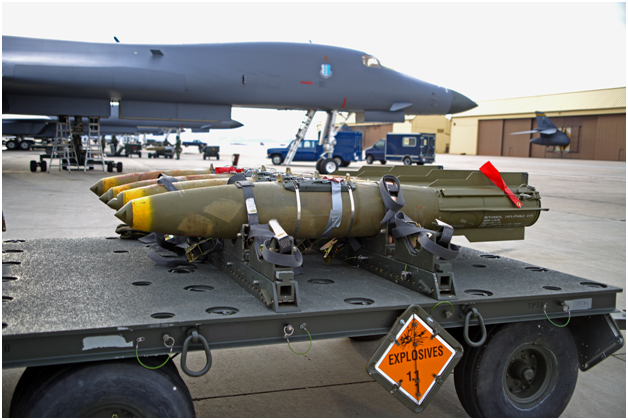RELIABILITY ENGINEERING IN SUPPORT OF AIRBOURNE RECONNAISSANCE LOW-ENHANCED (ARL-E)
The purpose of this Case Study is to capture the main areas of responsibility and insight/lessons learned during the execution of this contract. Aging Aircraft Solutions was brought on as a subcontractor to Leidos with a primary responsibility of assisting with Reliability Program Support and Logistics Analysis. The following describes the ARL-E Mission Equipment Payload (MEP).
ARL‑E is an Aerial Intelligence, Surveillance and Reconnaissance (AISR) system integrated on a militarized Bombardier DHC-8-315 aircraft (RO-6A) consisting of dual Electro-Optical/Infrared (EO/IR) sensors integrated with a high-resolution Full Motion Video (FMV) capability, Short Range Dismount Moving Target Indicator (DMTI) radar, a tactical Signal Intelligence (SIGINT) sub-system with Aerial Precision Geolocation, and Hyperspectral Imagery and corresponding High Resolution Imagery (HRI).
The architecture is designed to accommodate growth of future sensors to include Ground Moving Target Indicator (SAR/GMTI), Wide Area Aerial Surveillance (WAAS), Light Detection and Ranging (LIDAR), Foliage Penetration (FOPEN) radar, and Ground Penetration (GPEN)) radar. ARL‑E uses Beyond Line of Site Satellite communications and the Common Data Link for wideband downlink of sensor data to Distributed Common Ground System (DCGS‑A) elements. This report concentrates on the Mission Equipment Payload (MEP) systems of the ARL‑E.
Leidos Inc. was contracted to develop, build, test, deploy and provide contract logistics support for the ARL-E MEP. Leidos brought on Aging Aircraft Solutions, as reliability engineering subject matter experts, to play a major role in satisfying the extensive reliability requirements and deliverables required by the contract, and to help Leidos design a system that would meet operation reliability requirements once deployed.
Aging Aircraft Solutions’ reliability program support consisted of the development of the following deliverables:
- Reliability Program Plan (RPP)
- Failure Reporting, Analysis & Corrective Action Systems (FRACAS)
- Failure Modes Effects and Criticality Analysis (FMECA)
- Reliability Block Diagram (RBD)
- Fault Tree Analysis (FTA)
- Reliability Centered Maintenance (RCM) analysis
- Level of Repair Analysis (LORA)
- Maintenance Task Analysis (MTA)
Aging Aircraft Solutions was tasked with development of the Reliability Program Plan (RPP) deliverable for the ARL-E system from scratch, with the first draft due within 60 days of contract award. Our successful performance drew on our extensive experience supporting reliability programs and involved a comprehensive understanding of ANSI/GEIA-STD-0009-2008, Reliability Program Standard for Systems Design, Development, and Manufacturing, plus TA-HB-0009, 2013-05, Reliability Program Handbook. The handbook was the most helpful in laying out the structure of the RPP but required an understanding of exactly where in the developmental process the ARL-E MEP is. This understanding was critical in determining the applicable areas of the handbook structure requirements. In the case of the ARL-E MEP is became apparent the developmental decision requirements were not applicable due to the MEP consisting of predeveloped components. This revelation was not apparent during the early development stages of the RPP.
Development of the FRACAS was accomplished using ANSI/AIAA S-102.1.4-2009. One of the areas which required extensive research and logic was the development of an Anomaly Mitigation Process and Closed Loop Flowchart. Extensive collaboration with all stakeholders was required in the flowchart development. This flowchart was also made part of the RPP and was further used in the development of parts of the SPROCKET database.
Logistics Analysis, which fell under the Logistics Product Data umbrella, consisted of several different Analysis Reports which we became responsible for and which are listed below:
- Failure Mode, Effects and Criticality Analysis (FMECA)
- Fault Tree Analysis (FTA)
- Maintenance Task Analysis (MTA)
- Reliability Centered Maintenance (RCM)
Development of the FMECA was accomplished in accordance with ANSI/AIAA S102.2.4-2015 and consisted of a massive worksheet and an overall report. The worksheet listed every component of the ARL-E MEP and all known possible failure modes, failure effects, failure mechanism, failure detection method and embedded calculations to assign a criticality value and risk probability among others. A very time-consuming aspect to developing this worksheet was the need of Mean Time to Failure data for each component. Some was available from other systems the components were used on but a large amount required contacting the manufacture and asking for a specification sheet. This process needs to be started at the onset of a project like this to avoid delays. The other time-consuming aspect was the gathering of failure data from subject matter experts (SME). Again, this needs to be started at the onset and the SME’s need to be identified along with their project leads as some SME’s responded in a timely manner and others did not. A real need to develop good relationships with the SME’s is critical for success in this area.
Development of the FTA was dependent on the Reliability Model developed not under our control. Need to make sure of availability and what software is required to use the model.
Development of the MTA was accomplished in accordance with TA-STD-0017 and as with the FMECA consisted of a massive worksheet and an overall report. The worksheet was consisted of a separate tab for each of the 155 components of the MEP that were identified for this analysis. On each tab instructions for diagnostics, removing and replacing, and operational check for each component was listed and the associated time required for each operation. Any required materials or special tooling was also listed when applicable. As with the FMECA, heavy support from the associated SME’s was critical due to very limited similar previously developed instructions. Because of this limitation Aging Aircraft Solutions was required to develop the instructional material for most of the components. Critical to the successful accomplishment of this task was the availability of installation drawings as the root source material for development of instructional data.
RCM development was accomplished in accordance with MIL-STD-3034 Reliability Centered Process, 21 JAN 11. It contains all the rollups from RBD, FTA, FMECA, and MTA reports and the identification of all servicing and lubrication requirements. Due to the ARL-E Technical Manual development not finished and lack of a fielded failure data, many parts of the RCM analysis were not accomplished.
Can we help you with your project or program? Please contact us! We would be excited to apply our experience and expertise to your needs.


